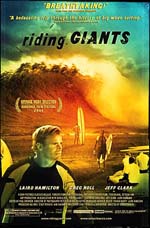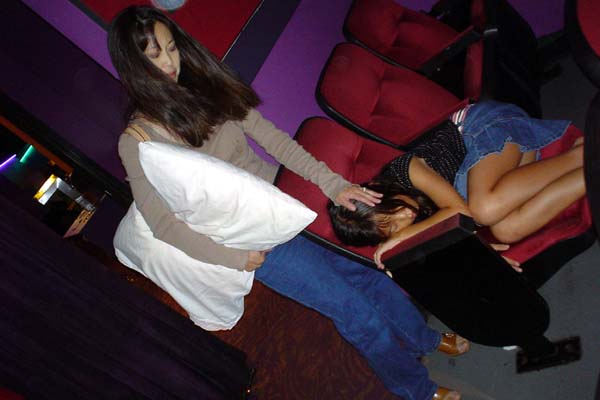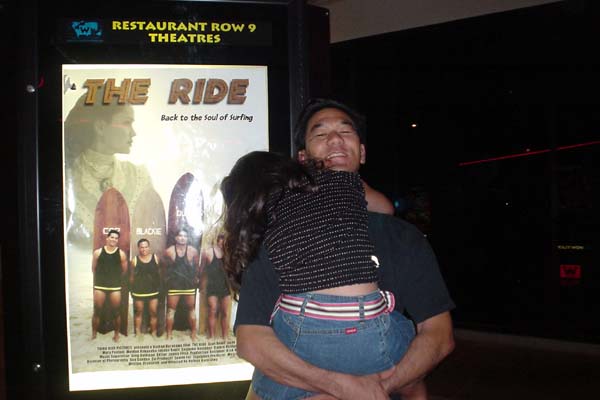Movie Review: Riding Giants (8/18/04) Bringing my wife and daughter to a surf movie is always a dicey proposition. They already worry too much when "daddy" goes surfing. But having them check out the new big wave surfing documentary "Riding Giants" would probably raise the stress level at least two orders of magnitude in the Miyake household. Turned out my fears were unfounded. The movie was directed by Stacy Peralta of Bones Brigade fame, who recently created the landmark skateboarding movie "Dogtown and Z-Boys." Interestingly, Peralta is actually a longtime surfer who yearned of doing a tribute to surfing. Thus "Riding Giants" was realized. The show opened with a two-minute montage of the history of surfing, complete with still images (from old photos and drawings) jumping across the silver screen. It then proceeded to focus on big wave surfing and three of its vanguards: Greg Noll, Jeff Clark and Laird Hamilton. Noll was one of the pioneers of the North Shore in the 50s and 60s, highlighting (and finalizing) his career by catching the biggest wave ever paddled into. Clark discovered the incredible California big wave known as Mavericks, surfing it alone for 15 years before others finally ventured out with him. And Hamilton is the current groundbreaker of the new tow-in surfing phenomena, riding waves that are humanly impossible to paddle into, most notably at Jaws and Teahupo'o. All throughout, the movie was peppered with interviews of a number of big wave surfers and their "colorful" dialog (Gerry Lopez always has the best lines). The movie highlighted these personalities while simultaneously tracking surf culture as it transformed from a fringe lifestyle into a full-fledged industry. The big wave surfers are likened to astronauts, "stepping off the edge of the Earth" and literally going where no one had ever gone before. The section on Mark Foo's death at Mavericks was harrowing. Laird picking out his own stepfather was pretty funny. And the Teahupo'o wave that Laird snags four years ago is to this day still mind-boggling. Because of the varying age and quality of the film/video stock, the images went from grainy to tack sharp. Peralta obviously wasn't trying to put out a crisp, tight film--he wanted to tell a story full of soul and color without the requisite contiguous level of high quality material. One neat effect that was used was the 3D animation of still frames--really cool! And the Monty Pythonish history of surfing montage actually worked quite well. But the proof of how good this movie was lies not in a surf aficionado's review, but in that of a lay person. My wife (a total nonsurfer) actually loved the movie! Besides the incredible imagery, she was especially charmed by the genuine passion that the surfers exhibited. "It wasn't like other surf movies where you see just wave after wave," she said. "There was a good story, with the surfers coming across as real people who just loved to surf." "What about me and my passion for surfing?" I jokingly asked her afterwards. At least she was reassured that I'd never attempt any really big waves like the ones in the movie. As for my little surfer girl daughter, well, she slept through most of the show. It was a school night--what can I say?
Official Site
|


